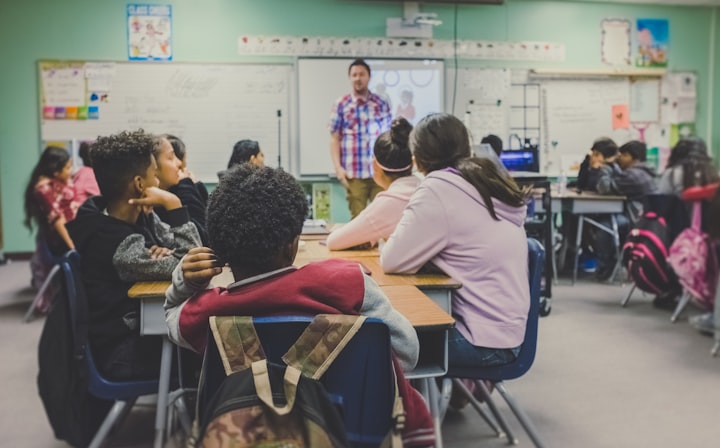Need for physical education for college students.
Need for physical education for college students.
In physical education, students learn about active exercise programs, which allow them to apply what they have learned in physical education. Games and activities play a role in strengthening the knowledge learned in other subjects.
Many schools have made physical education an important part of their curriculum to ensure that students can promote and maintain a healthy balance between education and exercise. Physical education helps students to improve their knowledge of health problems and habits so that they can live a more comfortable life. While some schools do not require students to take physical education classes, young students must stay fit.
This is important because teachers can provide exercise breaks as part of a consistent curriculum to reset students' attention "during class (Kibbe et al., 2011; see chapter 6), provide less training, and produce stronger energy and balance for students (Stewart et al., 2004). If regular physical activity is part of a student's lifestyle, they can stay healthy.
Exercise students can focus and focus better, which can have a positive impact on their learning life. Students have a high level of knowledge, which is evident throughout life. This information helps students to make wise decisions about their safety, health, and well-being.
Classes in health and physical education are important to teach students important decisions that will guide them throughout life. Advanced physical education programs are needed to develop students' ability, health-related quality, commitment, and enjoyment of exercise so that they can function physically throughout their lives. To prevent bullying, education programs in schools that are equitable, disciplined, and naturally sensitive should be developed.
We know that the best kind of program is designed, taking into account the different learning styles and preferences of our students. To achieve this, motor development, cognition, social, spiritual, cultural, and moral values must be taught through a curriculum that offers a wide range of physical activities and experiences, so that the learner can make informed decisions about what they like and feel competent.
Physical Education (PE) education encourages students to develop skills and confidence so that they can participate in many physical activities and become an integral part of their life outside of school. It is important to understand not only the difference between physical education and physical activity but also how they both work together to develop knowledge, skills, self-esteem, and a love of physical activity throughout one's life. The Comprehensive School Physical Activity Program (CSPAP) is a multi-faceted approach to school districts where schools offer more opportunities to accumulate at least 60 minutes of exercise during the school day. Environmental education is the foundation of CSPAP which provides work for all learners in all schools.
In this study, twelve-hour collaborative programs were developed to support teacher training, aimed at familiarizing teachers and teachers with the strategies and strategies to promote student self-reliance in alternative careers. These strategies have been adopted by the strategies identified in previous programs to support autonomy [34,35,36,37].
High school teachers (n = 29, 11 high schools and their students) from 502 cities in Jyvaskyla, Central Finland, have been invited to participate in the course. In addition, parents and caregivers of participants provided details of people who reported on the provision of independent school support, exercise, parental love, and parental control they provided to their children during data collection. Learners' attitudes towards compliant behaviors, visible behavioral controls, and goals regarding their future participation in physical activity are measured on a scale determined following the reporting guidelines [48].
Foundations for Cultural and Physical Promotion in Jyvaskyla, p. Student work "and teaching in the context of teacher ethics in environmental education in high school.
It is important to provide children and young people with educational information that enhances physical learning and promotes long-term health and well-being. The introduction of sports and health courses can help our students learn such important social skills as teamwork, empathy, and teamwork. According to Simon and Morton (Simons'Morton, 1994), the main purpose of PE is to ensure that students participate in physical activity during class and are trained in the knowledge and skills needed to be able to work outside of school life.
Students should be able to take the lead, communicate with others, question actions and regulations and address their own behavior. In PE, students are allowed to work in a team, to ask what their peers are doing, and to take responsibility for their actions. Students should also have the opportunity to take on leadership roles in sports and activities, as this will help them develop leadership skills.
A 2012 National Cardinal and colleagues' study released in 2012 found that less than 40 percent of American colleges and universities require their students to complete a workout before graduating with a bachelor's degree, as sports associations and national health authorities worry about the health consequences of a lack of exercise. According to a study by Oregon State University, when college students in the US had to take physical education classes in the 1920s to meet physical needs, that figure dropped to 39%, the lowest in the country. It has been suggested that the physical needs of college students should be replicated in many provinces across the country, especially at major universities such as ASU.
A fitness requirement can provide a level playing field for all students, allowing them to progress at their own pace without putting pressure on themselves to go to the gym or perform timely activities in their routine. Giving students the motivation to exercise as a requirement can lead many students to focus on their health.
About the Creator
Rosan Pandey
Hi there!






Comments
There are no comments for this story
Be the first to respond and start the conversation.